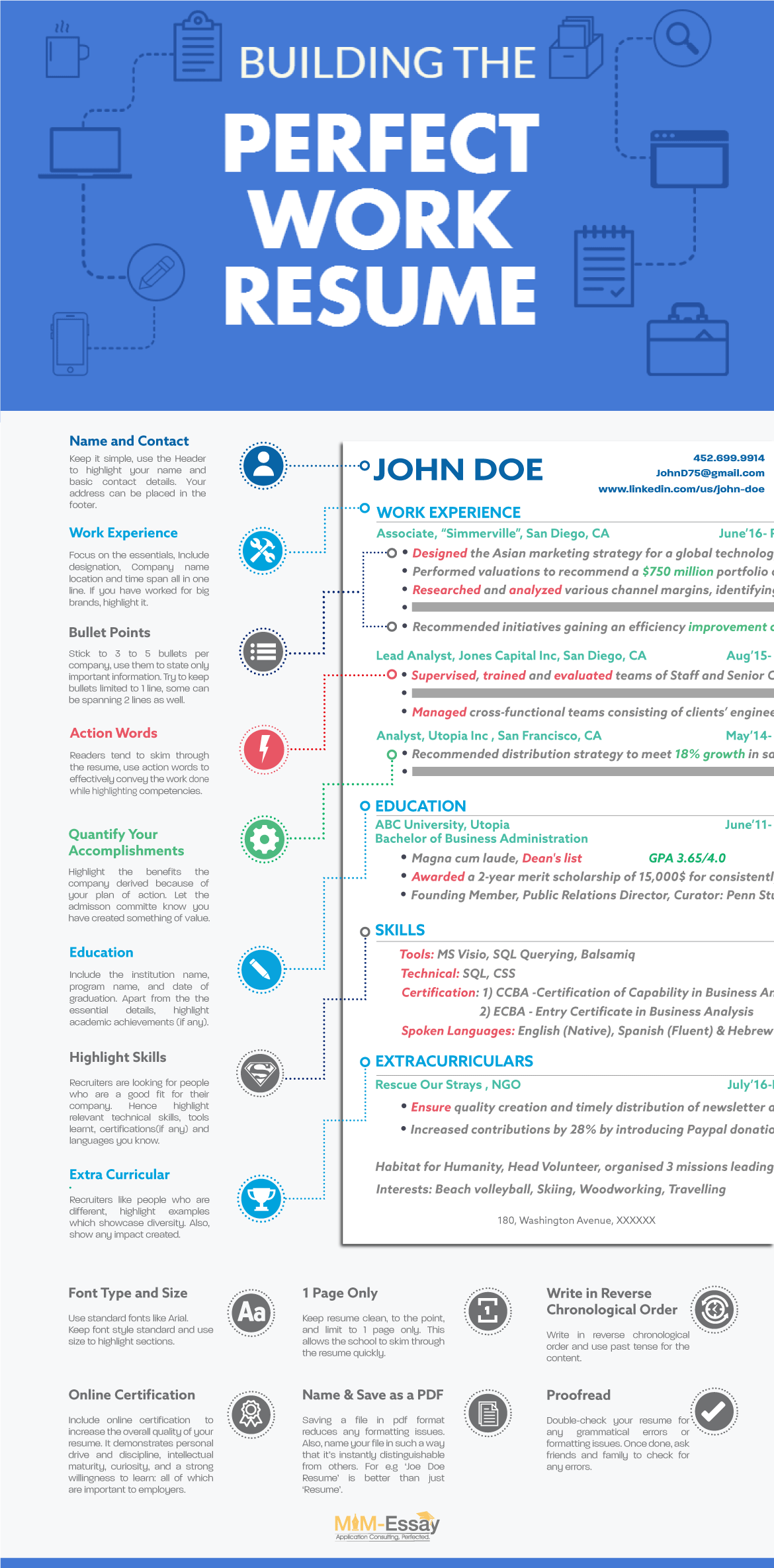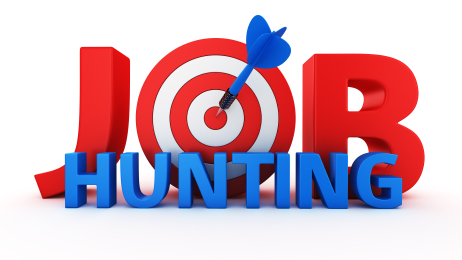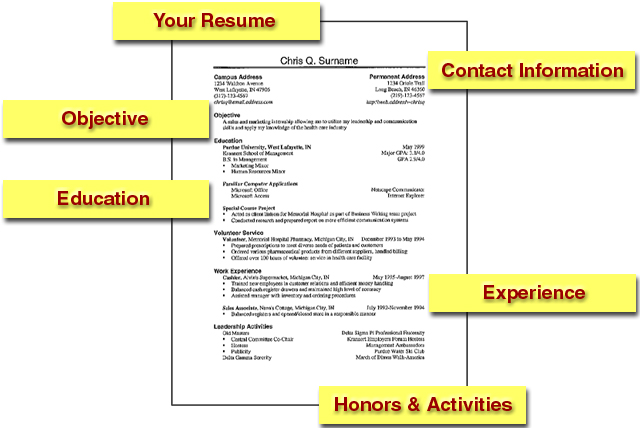13 Useful Tips for Creating a Well-Crafted Resume
Did you know the chances of getting shortlisted for an interview on a generic resume is almost zero? Read on to discover 13 best kept secret about well crafted resume
A typical recruiter spends not more than 8-12 seconds per resume and if they see nothing that holds their interest, your resume most probably ends up in the rejected pile.
In fact, Google receives around 2 million applicants each year out of which they select only 5000.
With so much competition everywhere, you need to make sure your resume stands out to increase your chances of getting shortlisted.
From quantifying achievements, optimizing your bullet points and including action words to writing your resume in active voice and proofreading it, you should aim to make sure that your resume is a level above the rest.
See: How To Make A Resume From Scratch! – A Complete Step-by-Step Guide
Now sure how you can do that?
Check out these 13 useful tips on resume writing that’ll take your resume to the next level.
Once you implement the tips in your job resume, we are confident that your chances of getting shortlisted for job interviews will increase significantly.
Further, the infographic given below would give you an idea about what a resume should and should not contain & also a few things to remember while creating your resume.

Now that you have a basic overview of how a resume should be, let’s go through the points mentioned in the infographic, in detail.
13 Amazing Tips for Creating a Well-Crafted Resume
[the_ad id=”7253″]
1. The ‘One-Page’ Rule
First of all, your resume needs to be structured such that it can be easily skim and scan by the recruiter.
Usually a 1-page resume is ideal, and when divided into relevant sections can give about a clean and professional image.
If you’re someone with more than 7 years work experience, it’s alright if your resume goes beyond 1 page.
2. Standard Font Size and Type
Use a standard font like Arial while writing your resume. It looks legible even when you reduce the font size and is easy on the eyes.
You could also choose from Calibri, Garamond, Trebuchet MS, Georgia, and Helvetica for the same reason.
Just, don’t mix the fonts. It looks untidy and the recruiter won’t appreciate it.
Follow this Effective Resume Model to Craft an Excellent Resume for your Job Search
The header should be sized between 20 and 22, section head could range from 12 to 14, while the main body should be between 10 and 12. This will give your resume a fluid look and make it stand out from other resumes.
3. What Should Be Added in The Contact Details Section?
Your name is basically your introduction and therefore, it should always come at the very top of your resume.
Apart from that, mention your phone number along with country code and an appropriate email address.
For example, if your name is Peter, refrain from using inappropriate email like ‘[email protected]’ and instead you could create a new email address like ‘[email protected]’.
You can also include a link to your LinkedIn profile, but make sure it is updated and matches with the resume.
4. Work Experience: The Most Important Section on Your Resume
Employers are really interested in your work experience, it talks volume about your skill set as well as showcases your caliber by highlighting projects you worked on, impact created and leadership roles you took up. Hence properly highlighting the work experience is important.
Read: What Do Employers Want?
But that’s not to say you should include all possible jobs you have done in your resume. Mention only the relevant work experience pertaining to the job you’re applying for. Adding anything which is outside the recruiter’s core requirements would seem like a waste of space to him (and you).
For example,
If you are applying for a Big Data Consultant position, there’s no need to mention that you have worked as a Sales associate 6 years ago. However, mentioning that you worked as a Data Analyst at XYZ firm would be a good idea.
5. Optimize and Quantify Your Bullet Points
Bullet points are the most effective way to express information.
Also, it’s best to restrict your bullet points to 2 lines. Anything more than that looks like a paragraph.
Remember, a recruiter typically spends only 12-15 seconds per resume and therefore large chunks of data in the resume will usually be neglected.
Quantifying your achievements helps paint a better picture of your contributions at your previous workplace and how the company benefited from you.
For example,
Without Quantification: Streamlined inspection process by upgrading sensing and marking devices.
With Quantification: Managed project to upgrade defect sensing and marking devices, resulting in the elimination of human inspection on line, saving $200,000 to $350,000 per year.
6. Actions Words Are Important: Use Them
Imagine how boring and ineffective it would be for the recruiter if all your bullet points start with ‘Responsible for…’
The recruiter has to go through countless resumes in a limited amount of time. You can make your resume stand out from others by implementing action words.
Action words are basically keywords that the recruiter is looking for while browsing through resumes.
For example,
If you’re applying for a job where you’re required to increase Efficiency, Sales or Revenue of your company, the recruiter might be looking for the following keywords/action words –
- Amplified
- Boosted
- Generated
- Maximized
- Devised
- Incorporated
- Restructured
Besides this, the keywords targeted by recruiter also include the skills and experiences specific to the job opening.
Resources:
- How To Write A Killer Resume Objective (Samples Included)
- 10 Golden Resume Rules: How to Make Your Recruiter Call You Back
- What Makes a Professional Resume? Download Some Great Samples Here
7. What Are Educational Achievements?
Educational Achievements are nothing but accomplishments you have achieved in your college life. They could be academic honors, club positions, scholarships, online certifications, etc. which can give you a considerable edge over others in professional life.
You can list all of them under the ‘Education’ section in your resume. Also, remember to always list your educational qualifications after your work experience.
In a competitive job market, many recent grads find themselves lost in the shuffle, especially when other applicants have similar academic histories. Educational accomplishments are what sets you apart from the hundreds of other candidates vying for the same job you really want.
8. Should You Include All Possible Skills?
The straight answer is NO.
You might think that adding all possible skills might make you come off as very smart and someone with a multi-faceted personality, but the reality is usually the opposite. The recruiter is not interested in what extra skills you possess as long as he can see that you possess the relevant ones.
So, it’s best to stick to adding only relevant skills in your resume.
Going through the job description and the company website will give you a good idea about the role, and the kind of skills the company values.
Don’t Miss: How do you research companies you want to work for?
9. Awards and Interests
If you have received any awards (Workplace or otherwise) in the recent past, feel free to list them in your resume. You can highlight them in their respective sections while writing your resume.
Also, add some background information (What does the award mean, what it took to get it, etc.) to help the recruiter get to know you better.
As for the “Interests”, a lot of people go wrong when it comes to adding information in this section.
You should not list all your hobbies in the interest’s section. A good tip, is to read the job description carefully and list your hobbies/interests accordingly.
If the job requires you to be “analytical and focused”, chess and Sudoku are good hobbies to mention on your resume. Reading books and watching sitcoms are not.
10. Are You a Polyglot?
If you know more than 1 language (preferably international), feel free to list them on your resume. As more and more businesses enter the global marketplace, they are looking for candidates who are fluent in foreign languages.
You can use the standard terms of proficiency such as ‘native’, ‘basic’, ‘fluent’, ‘intermediate’ or otherwise to describe how well you speak.
For example,
Spoken Languages: English (Native), German (Fluent) & Mandarin (Basic)
11. Active Voice Vs Passive Voice
Always write your resume in active voice.
Active voice puts the focus on the subject (Hint: it’s you!) and shows that the subject performs the action stated by the verb.
In passive voice sentences, the subject is acted upon by the verb.
Consider these 2 examples,
A. Passive Voice: The document retrieved process was made faster
B. Active Voice: Optimized the document retrieved process to improve work efficiency by 15%
Even though both statements essentially mean the same thing, Example B conveys that the person optimized the document retrieved process and puts him in the authoritative position as opposed to Example A where it looks like someone else should be given credit.
12. Proof Read! Proof Read!! Proof Read!!!
Imagine sending out your resume and later realizing you made a couple of silly mistakes which could be easily avoided.
Mistakes like these won’t be tolerated and would immediately mean losing your chances of getting shortlisted.
Hence, always proofread your resume at least twice and look for any grammatical or formatting errors. Once done, ask your friends and family to review it before sending it out.
MUST READ:
13. Why Save It as A PDF?
Always send your file in a pdf format.
Having your resume sent in a pdf format will substantially reduce any formatting errors that might occur on the recruiter’s end, especially if their editing software is different from yours.
Also, name your file in such a way that it’s instantly distinguishable from others. For e.g. ‘Peter Rhoades Resume’ is better than just ‘Resume’.
Conclusion
With a typical recruiter spending only a couple of seconds going through your resume, the importance of a good resume cannot be debated.
Crafting your resume according to the points mentioned above will substantially increase your chances of getting shortlisted.
For more tips, check out this post on 23 Resume Writing Tips to Create the Perfect Job Resume in 2017 to take your resume to the next level.
About Guest Author:
Abhyank Srinet is the founder of MiM-Essay.com
- 5 Steps to Achieve Job Satisfaction in 2019 - March 7, 2019
- Perfect Advice on How to List Education on Resume - February 12, 2019
- How to Pass CA IPCC in Last 3 Months Preparation - February 2, 2019



